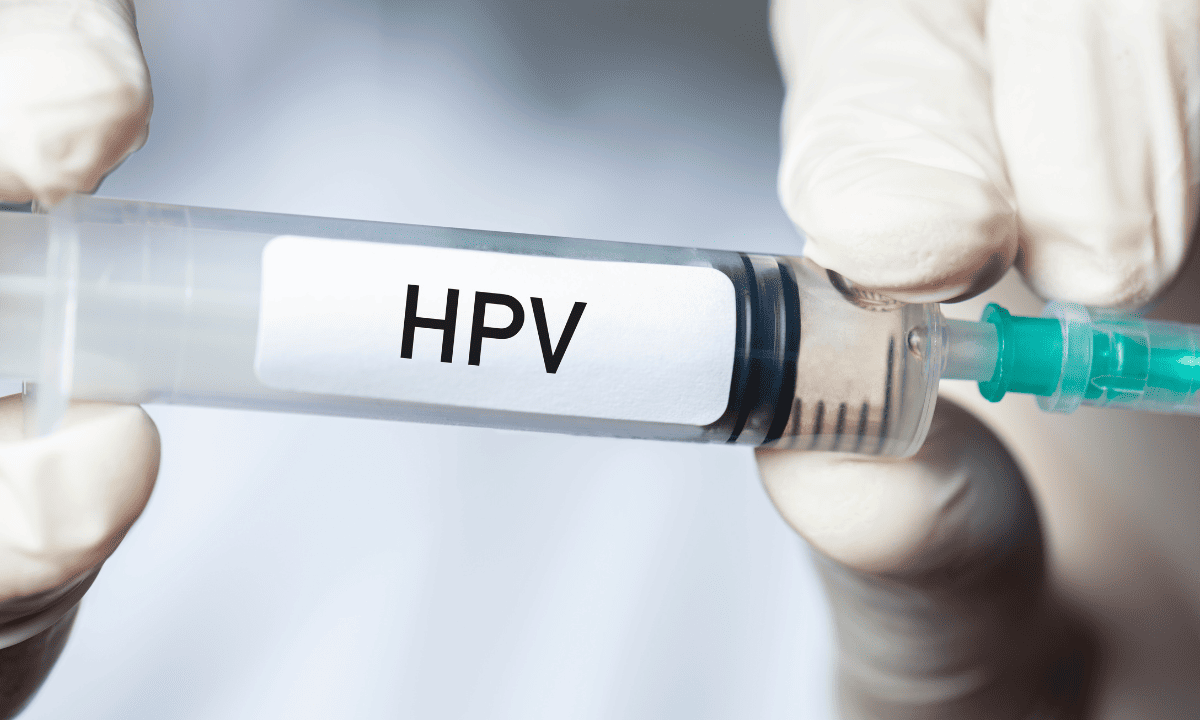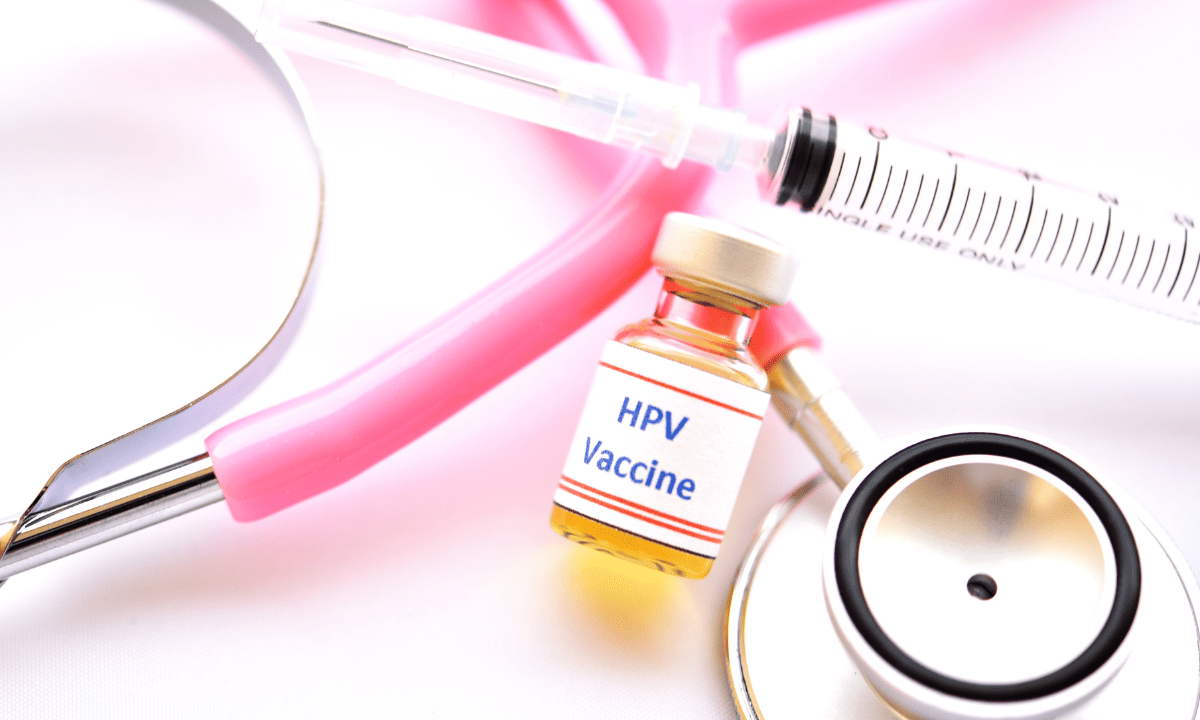Nearly all cervical cancers are caused by something preventable: persistent HPV infection. With regular screening and vaccination, most cases can be caught early or avoided. But when cells do become invasive, here's what that means and what happens next.
What is invasive cervical cancer?
Invasive cervical cancer occurs when abnormal or precancerous cells in the cervix grow and begin to move beyond the surface layer of cells. Instead of staying confined to the top layer, these cancerous cells invade deeper cervical tissues.
If left untreated, they can affect nearby organs in the pelvis, such as the bladder or bowel. The cancer may also slowly spread to more distant parts of the body, including the lungs or liver.
What causes invasive cervical cancer?

Leading cause
The primary cause of invasive cervical cancer is persistent infection with high-risk types of the human papillomavirus (HPV). HPV is incredibly common and spreads through sexual contact including vaginal, anal and oral sexual intercourse.
In many cases, the body’s immune system clears HPV naturally within one to two years. However, when a high-risk strain of the virus remains in the body, it can begin to cause changes to cervical cells. These precancerous changes can eventually progress and become invasive if they are not detected and treated.
Risk factors
Some factors make it harder for the body to clear HPV or increase the chance of abnormalities developing.
Smoking:
Frequent smoking can weaken the immune system and makes HPV infections more persistent
Weakened immune system:
Individuals with a weakened immunity, including those living with HIV, may be more vulnerable to persistent HPV infection and cervical cancer development.
Other sexually transmitted infections (STIs):
- Having other STIs can create inflammation or changes in the genital area, making HPV infection more likely or harder to clear.
Reproductive and hormonal factors:
Having many full-term pregnancies
Being younger than 17 when having the first full-term pregnancy
Long-term use of oral contraceptives, which has been associated with a slightly increased risk
Other factors:
Family history of cervical cancer
Diets low in fruits and vegetables
These risk factors do not mean someone will definitely develop cervical cancer. They simply highlight areas where extra awareness and regular screening are especially important.
What stage is invasive cervical cancer?

To identify the stages of invasive cervical cancer, doctors use the International Federation of Gynaecology and Obstetrics (FIGO) staging system to understand how far cervical cancer has spread and to guide treatment decisions.
Stage 0 (Carcinoma in situ):
Abnormal cells sit on the surface of the cervix. They have not invaded deeper tissues and are not considered invasive cancer.
Stage I:
Cancer is limited to the cervix but has invaded its deeper tissues.
Stage II:
Cancer has moved beyond the cervix but has not reached the pelvic wall or lower third of the vagina.
Stage III:
Cancer has reached the lower third of the vagina, the pelvic wall or the nearby lymph nodes.
It may also cause kidney-related problems if it blocks the ureters—muscular tubes that carry urine from each kidney to the urinary bladder.
Stage IV:
Cancer has spread outside the pelvis or into organs such as the bladder or rectum or travelled to distant sites like the lungs or liver.
Early detection significantly improves outcomes, which is why screening remains one of the most powerful tools for protection.
Early signs and symptoms to watch for
Cervical cancer often has no symptoms in its early stages. However, when symptoms do appear, they may include
Unusual vaginal bleeding, such as bleeding after sex, between periods or after menopause
Changes in vaginal discharge, which may be watery, foul-smelling or blood-stained
Pain during intercourse
Pelvic discomfort or pressure
Heavier or longer menstrual periods
Back or leg pain in more advanced cases
These symptoms can also be caused by many other conditions. If you notice any changes, schedule an appointment with Thomson Medical today. Our doctors will provide a personalised treatment plan and discuss any necessary tests based on your health conditions.
How is invasive cervical cancer diagnosed?

To diagnose invasive cervical cancer, your gynaecological oncologists may combine several screening methods to assess the health of your cervix and confirm whether cancer is present.
Abnormal screening results
A routine Pap smear or HPV test may detect abnormal cells or the presence of high-risk HPV types. If you receive abnormal results, don’t panic yet – it is not enough to confirm whether you have cancer, but you may need further assessment.
Colposcopy
A colposcopy is a closer examination of the cervix using a magnifying instrument. It allows your healthcare provider to identify any areas that look unusual.
Biopsy
A small sample of your cervical tissue may be taken during a colposcopy. There are different types of biopsies:
Punch biopsy:
Removes a small piece of your cervical tissue
Endocervical curettage:
Gently scrapes cells from the cervical canal
Cone biopsy:
Removes a larger, cone-shaped piece of tissue using a thin wire loop heated, called loop electrosurgical excision procedure (LEEP), laser or scalpel
Pathological examination
Your doctor will carefully look at your tissue sample under a microscope to check whether any cancer cells are present and to determine what type they might be.
This close examination helps your doctor understand what’s happening in your body so they can guide you with clarity and care.
Staging
If cancer is found, the next step is to assess how far it may have spread. You may have imaging scans, physical exams, or sometimes additional biopsies.
These tests are done to give you the most accurate picture of your health, so your doctors can create a treatment plan that fits your needs and supports you every step of the way.
Our women's cancer specialist
Loading...
Treatment options for invasive cervical cancer
Your treatment plan will depend on the stage of the cancer, your overall health and, importantly, your personal preferences. There are several effective treatment options available, which are as follows:
Surgery
You may undergo a radical hysterectomy that removes the uterus, cervix and surrounding tissues, often along with nearby lymph nodes. Surgery may be used alone in early-stage disease or combined with radiotherapy or chemotherapy when needed.
Radiation therapy
Radiation uses high-energy beams to destroy cancer cells. There are two main types of this therapy:
External beam radiation therapy:
Directs radiation from a machine outside the body.
Brachytherapy:
Places a radiation source inside or near the tumour.
Your doctor usually combines radiation with chemotherapy if the cancer has moved to more advanced stages.
Chemotherapy
Chemotherapy uses drugs to target and kill cancer cells throughout your body. It may be given with radiation to make both treatments more effective or used before surgery to shrink your tumour.
Targeted therapy
Targeted treatments help treat cancer by acting on specific molecules within cancer cells. By doing so, they can slow cancer growth or help chemotherapy work better.
Immunotherapy
Immunotherapy is a treatment option that helps your immune system to better recognise and attack cancer cells. This therapy works by strengthening your body's natural defences to fight cancer more effectively. It may be recommended if standard treatments like surgery, chemotherapy, or radiation are not successful or suitable for your case.
Other options: Palliative care
Palliative care can be an important part of your treatment plan at any stage. Its goal is not to replace medical treatment but to enhance your quality of life.
The method focuses on managing symptoms like pain or fatigue, offering emotional support, and making treatments more comfortable.
Prognosis and outlook
Survival rates vary depending on the stage at which the cancer is diagnosed and are similar across many developed countries, including Singapore. The following statistics are based on large international cancer registries and are widely used for patient education:
Localised (Stage I):
About 91% of people survive at least 5 years after diagnosis
Regional spread (Stage II or III):
Around 60% survive 5 years
Distant spread (Stage IV):
Around 19% survive 5 years
These figures are general benchmarks; actual survival may differ based on individual outlook and may differ based on your age, overall health, type and stage of cancer, and treatments received. If you undergo early detection and continue with treatment consistently, your chances of a positive outcome improve significantly.
How to prevent invasive cervical cancer?

Primary prevention
HPV vaccination:
Vaccination against HPV is highly effective at preventing infection from the high-risk HPV strains that cause most cervical cancers. Works best when given before sexual activity begins.
Safe sexual activities:
Although they cannot provide complete protection because HPV spreads through skin-to-skin contact, safe sex practices, including condom use and limiting your number of sexual partners, can reduce your risk of HPV transmission.
Avoiding smoking:
Not smoking supports your immune system and helps lower cervical cancer risk.
Healthy diet:
A balanced diet rich in fruits and vegetables supports immune function and overall health.
Secondary prevention
Regular cervical screening is essential. It enables your doctor to identify abnormal cells at an early stage and treat precancerous lesions before they progress to cervical cancer, even if you have received the HPV vaccine.
General population:
Recommended for women starting around age 30, with screenings every 5–10 years depending on the type of test used
Women living with HIV:
Should be screened every 3 years starting at age 25
Negative HPV tests:
Can be extended to every 5 to 10 years for the screening intervals depending on national guidelines.
If you’re unsure which prevention steps are right for you or when to start screening, schedule an appointment with Thomson Medical today. Our doctor can review your risk factors, guide you on vaccination and screening schedules, and help you stay proactive about your cervical health.
FAQ
How fast does invasive cervical cancer spread?
Cervical cancer usually grows slowly. Precancerous changes can take years before turning into cancer. Once it becomes invasive, how fast it spreads really depends on you – your immune system, your health, and the type of HPV involved, as everyone’s body reacts differently.
What is the difference between invasive cervical cancer and cervical cancer?
Cervical cancer refers to any cancer that begins in your cervix.
Invasive cervical cancer specifically describes cancer that has grown beyond the surface layer and into deeper tissues.
What is the survival rate for invasive cervical cancer?
The outlook depends on how early the cancer is found.
If it’s still localised, about 91% of people live at least five years.
If it has spread far away, the rate is around 19%.
Overall, about two-thirds of people live at least 5 years after diagnosis.
How long can you have cervical cancer without knowing?
It’s possible to have cervical cancer for years without feeling anything unusual. That’s why regular screening is so important, as it can catch changes long before symptoms appear, giving you the possible chance for early treatment.
Can the HPV vaccine prevent invasive cervical cancer?
Yes, the HPV vaccine can prevent cervical cancers significantly by protecting against the most dangerous HPV types. However, you still need to take regular cervical cancer screenings because the vaccine does not guard against every HPV strain.
Can invasive cervical cancer come back after treatment?
It can sometimes return, either near where it started or in another part of the body. Most recurrences happen within the first 2–3 years, so staying consistent with your follow-up appointments is one of the best ways to take care of yourself.
The information provided is intended for general guidance only and should not be considered medical advice. For personalised recommendations and tailored advice based on your unique situations, please consult a specialist at Thomson Medical. Request an appointment with Thomson Medical today.
For more information, contact us:
Thomson Specialists (Women's Health)
Thomson Women's Clinic (TWC)
- Novena:
6592 6686 (Call), 8611 8986 (WA) - Bukit Batok:
6569 0668 (Call), 8686 3525 (WA) - Choa Chu Kang:
6893 1227 (Call), 8282 1796 (WA) Jurong:
6262 8588 (Call), 6262 8588 (WA)- Katong (female doctor):
6970 2272 (Call), 8611 9020 (WA) - Punggol:
6243 6843 (Call), 8811 0328 (WA) - Sembawang: 6753 5228
- Sengkang: 6388 8125
- Serangoon (female doctor): 6382 3313
- Tampines: 6857 6266
- Tiong Bahru: 6276 1525
